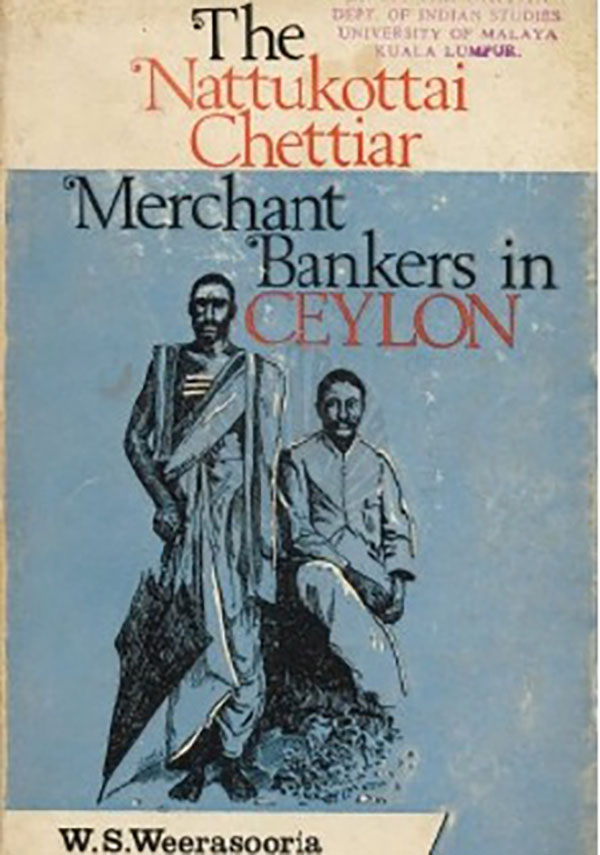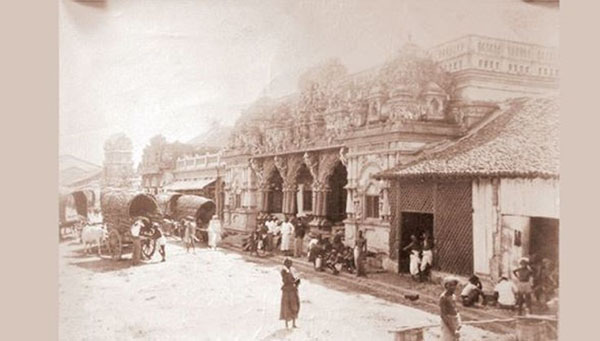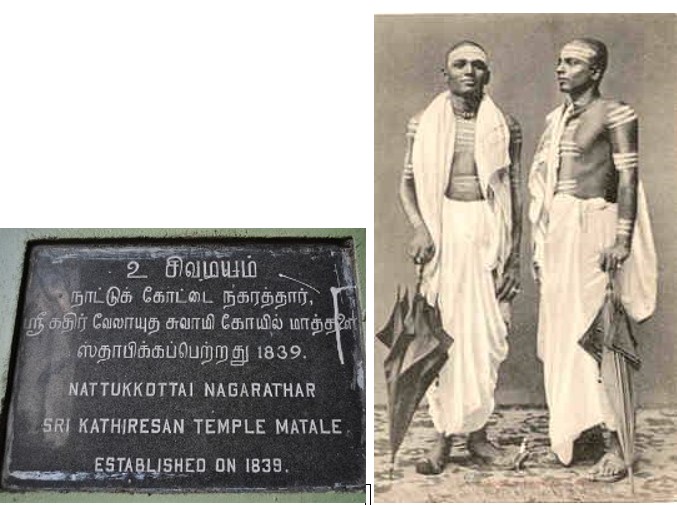The CHETTIARS of Tamil Nadu, Pioneers of Modern Banking – By W.S. WEERASOORIA



” Nagaraththar or Nattukottai Chettiars in Ceylon .
The community is a prominent mercantile caste in Tamil Nadu. The Nagarathars hail from a place called Chettinad in the southeastern region of Tamil Nadu in the district of Sivaganga. At one time, they lived in 96 villages, but now due to migration their spread has diminished to about 75 villages. They began in the 18th century by trading salt produced in coastal districts in the inland towns and villages. From there they expanded to moneylending. They are considered the pioneers of modern banking. They introduced concepts like pattru (debit), varavu (credit), selavu (expenditure), laabam (profit) and nashtam (loss). These are all collectively known as iynthogai (trial balance) – a unified document which reflects the current financial status of the business at any given time. They also had different lending rates for community members and for outsiders- something similar to the repo and reverse repo rates of present times! Subsequently, in the 19th century, the Nagarathars moved out of India to foreign lands like Burma (now Myanmar), Ceylon (Sri Lanka), Java, Sumatra, Malaysia, Singapore and Saigon (Vietnam) for trade and lending. It was in Burma they grew tremendously as moneylenders. They went into interior Burma where European bankers wouldn’t venture, and became an important part of that country’s economic growth. Their wealth grew, and they became powerful in India. This community, in the past, put its faith on on-the-job training rather than formal education. Subbiah of the Murugappa group shared his experience (the way he came to the highest level) in a recent conference in Chennai. A person will start as podiyan (office boy/peon) at the age of 13-17, go to the next level as aduthaal (clerk) in his early 20s, to kootali (agent) in his mid-20s, pangaali (partner) in his early-30s and mudalaali (owner) in his late-30s or early-40s. It is worthwhile to mention here that wherever they migrated they never failed to carry their distinct culture, tradition and religious faith with them. But it should be remembered that wherever the Chettiar community migrated they always maintained their strong links with their native homeland Chettinad.
They especially preserved their cultural and matrimonial ties with their own native villages in Chettinad. Their migration took place mostly in the early part of 19th-century and wherever they migrated they carried their religious and cultural footings in the alien lands.
Wherever they settled they had the habit of building magnificent Lord Murugan temples with excellent Dravidian architecture. Still, this evidence could be witnessed at the Colombo Sea Street.
In yesteryear, the Sea Street of Colombo was generally called Chettiar Street. The present location of Colombo Sea Street is referred to as Chettiar Theru in Tamil by the Tamil population.
The term ‘Chettiar Theru’ means that the majority of the dwellers or the occupants of the street were Chettiar community. It is one of the noteworthy facts to be mentioned here that this particular community deeply cherished the Hindu religious and traditional values.
The Chettiar community cherished the Murugan cult in Hinduism. They had the habit of building a chain of Murugan temples in their migrated lands. Most of the excellent Hindu temples which are presently seen in Pettah were built by the Nattukoatti Chettiar community of yesteryear.
Strong evidence
The majority of the Nattukottai Chettiar community left Sri Lanka during the period of the 1950s, but the temples built by them stand as strong evidence for their immeasurable contribution to Hinduism in Sri Lanka. According to certain historical evidence, the Chettiar community first of all came and settled in the Galle District, but later shifted to Colombo and other parts of the country. The Nattukottai Chettiar community is also known by another name Nakarathar community. Among the local population, they enjoyed a prestigious position. This wealthy community has the capability of establishing themselves with the existing local population. They usually establish strong links with different sections of the local public. The main intention and aim of the Chettiar community are to strengthen and secure their business interests in the migrated lands.
As far as Sri Lanka is concerned, they established themselves in different parts of the country such as Anuradhapura, Polonnaruwa, Jaffna, and upcountry, Tissamaharama, Galle and Colombo.
Money business
The main profession of the Nattukottai Chettiar community was money lending on nominal interest rates.
In other words, they were the first to introduce the money lending business to the people of Sri Lanka. The tactics of Nattukottai Chettiar community in money management was unique. With the passage of time, they gradually gained popularity among the local population of Sri Lanka.
They also introduced the pawning business to Sri Lankans even before the establishment of commercial banks.
The methods they adopted in financial transactions got much more recognition and popularity among the local population. Gradually they gained more popularity and integrated into the local population of Sri Lanka, especially during the 19th century. – Colombo Chetties, are different ethnicity group in the island of Ceylon, who migrated from the South India under Portuguese rule.
Arul Ponn Arul
A Good exposition and exposure of the (chettiar) Tamil Nadu Tamils,
I am proud to be a Tamil.
Contribution by the ‘Chttiars’ to Economic prosperity and the well being of famers ( pioneers of money lending/Banking) AND to Hindu religion are enormous and immeasurable. Ancient temples built in foreign lands like Burma (now Myanmar), Ceylon (Sri Lanka), Java, Sumatra, Singapore and Saigon (Vietnam) and Malaysia by’Chettiars’ are prevalent even today, in Malakka , Malaysia one of the early temple is seen near Portuguese (colony) settlements. I am not sure whether one could say ‘Murugan Cult’ [ The Chettiar community cherished the Murugan cult in Hinduism] Lord Murugan is believed a son of Lord Siva & Shakthi, principal diety (idol) of an ancient/oldest religion ‘ Hinduism’.
. Arul Ponn Arul







